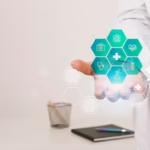In recent years, technology has made significant strides in reshaping healthcare systems worldwide. By 2025, these innovations will have further transformed patient care, diagnosis, treatment, and the overall healthcare experience. Technology promises to improve the accessibility, efficiency, and quality of healthcare while reducing costs. This article explores how healthcare is set to evolve with the help of new technologies in 2025 and beyond.
1. Telemedicine and Remote Care
Telemedicine has seen explosive growth in the past few years, driven by the COVID-19 pandemic and the increased demand for remote healthcare. By 2025, telemedicine will be a standard component of healthcare delivery, offering patients and doctors the ability to consult remotely, increasing convenience and access to care.
- How It Works: Telemedicine uses digital platforms such as video calls, mobile apps, and online portals to allow healthcare professionals to consult with patients without the need for an in-person visit. Patients can receive consultations, prescriptions, follow-ups, and even mental health therapy from the comfort of their homes.
- Impact: Telemedicine improves accessibility to healthcare services, especially in rural areas where healthcare professionals are scarce. It also reduces waiting times and transportation costs for patients, providing more efficient care.
Why It’s Important:
- Convenience and Accessibility: Telemedicine makes healthcare more convenient and accessible, particularly for individuals in underserved regions or with mobility challenges.
Example:
- Teladoc Health offers virtual consultations for a range of healthcare needs, from primary care to mental health services, connecting patients with doctors through video or phone calls.
2. Artificial Intelligence (AI) in Diagnostics
Artificial Intelligence (AI) has the potential to revolutionize diagnostics by analyzing large volumes of medical data faster and more accurately than human clinicians. In 2025, AI will play an even more prominent role in diagnosing diseases such as cancer, heart disease, and neurological conditions.
- How It Works: AI algorithms process medical images, lab results, and patient data to identify patterns that might be missed by human doctors. Machine learning models can predict disease outcomes, suggest treatment plans, and even detect early signs of diseases that are challenging to diagnose manually.
- Impact: AI in diagnostics reduces human error, enhances the speed and accuracy of diagnoses, and allows doctors to focus on more complex tasks and patient care.
Why It’s Important:
- Improved Accuracy: AI systems improve diagnostic accuracy, which is crucial in detecting life-threatening conditions in their early stages when treatment outcomes are better.
Example:
- IBM Watson Health uses AI to analyze medical data and assist in diagnosing and recommending treatments for conditions such as cancer, leveraging vast datasets to improve decision-making.
3. Wearables and Health Monitoring Devices
Wearable health devices, such as smartwatches and fitness trackers, are becoming an essential part of personal healthcare management. By 2025, these devices will have evolved to monitor more advanced health metrics, including real-time blood sugar levels, ECGs, and even hydration levels.
- How It Works: Wearables track key health indicators like heart rate, sleep patterns, physical activity, and blood oxygen levels. These devices send data to healthcare providers, enabling them to monitor patients’ conditions remotely and make timely interventions when necessary.
- Impact: Wearables promote proactive healthcare by helping individuals monitor their health in real time and enabling doctors to catch potential health issues before they become critical.
Why It’s Important:
- Preventive Care: Wearables allow individuals to actively manage their health, which can prevent more serious health issues down the line.
Example:
- Apple Watch has added health-monitoring features such as ECG functionality and fall detection, empowering users to take control of their health and share critical data with healthcare providers.
4. Personalized Medicine and Genetic Testing
In 2025, personalized medicine will be more prevalent, with healthcare treatments tailored to individuals based on their genetic makeup. Advances in genetic testing and genomics will allow for more precise treatment plans that are specifically suited to the patient’s genetic profile, leading to better outcomes.
- How It Works: Genetic testing involves analyzing a patient’s DNA to identify genetic markers that may influence how their body responds to certain medications or treatments. This information allows doctors to create a personalized treatment plan that minimizes side effects and maximizes efficacy.
- Impact: Personalized medicine will increase the effectiveness of treatments, reduce adverse drug reactions, and make healthcare more precise and targeted.
Why It’s Important:
- Optimized Treatment: Personalized medicine ensures that patients receive the most effective treatments based on their unique genetic information.
Example:
- 23andMe offers direct-to-consumer genetic testing, and healthcare providers are increasingly using genetic insights to tailor treatments for conditions like cancer, heart disease, and diabetes.
5. Blockchain for Healthcare Data Security
Blockchain technology has the potential to address one of healthcare’s most pressing issues: data security. By 2025, blockchain will be widely used to ensure the privacy, security, and accessibility of patient data, creating a more secure and transparent healthcare system.
- How It Works: Blockchain technology securely stores patient data in a decentralized and encrypted ledger. Patients control access to their data, granting permission to healthcare providers, insurance companies, and others as needed.
- Impact: Blockchain ensures that medical data is tamper-proof and accessible only to authorized individuals, preventing data breaches and enhancing privacy.
Why It’s Important:
- Data Privacy: Blockchain technology enhances the security and privacy of sensitive healthcare data, reducing the risk of cyberattacks and fraud.
Example:
- Medicalchain is a blockchain-based platform that enables secure, real-time access to medical records, giving patients more control over their personal health information.
6. Robotic Surgery and Automation
In 2025, robotic surgery will continue to advance, allowing surgeons to perform highly complex procedures with greater precision and minimal invasiveness. These robotic systems will assist in a wide range of surgeries, from orthopedics to cardiovascular procedures.
- How It Works: Robotic surgery systems use advanced robotics and AI to enhance a surgeon’s ability to perform operations with greater accuracy, control, and smaller incisions. These systems provide real-time data and 3D visualization, improving the surgeon’s precision.
- Impact: Robotic surgery can lead to faster recovery times, reduced risk of infection, and lower overall healthcare costs by minimizing the need for extended hospital stays.
Why It’s Important:
- Precision and Efficiency: Robotic surgery allows for minimally invasive procedures with higher precision, leading to better patient outcomes.
Example:
- Da Vinci Surgical Systems is one of the most widely used robotic surgical platforms, assisting surgeons in performing minimally invasive procedures with enhanced precision.
Conclusion
By 2025, technology will have fundamentally reshaped the healthcare landscape. From telemedicine to AI-driven diagnostics, wearables, personalized medicine, blockchain, and robotic surgery, these advancements promise to improve patient care, reduce costs, and increase overall healthcare efficiency. As technology continues to evolve, it will bring even more innovative solutions that further enhance healthcare systems, making them more accessible, personalized, and secure for patients worldwide.




